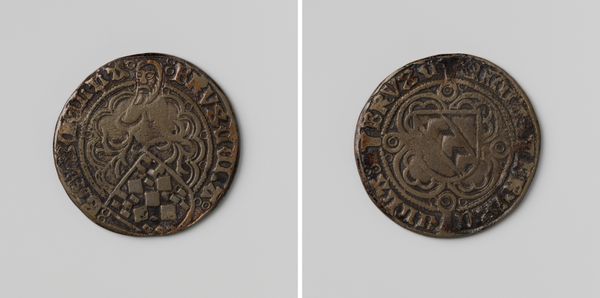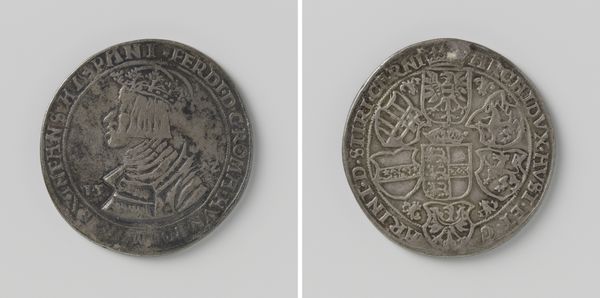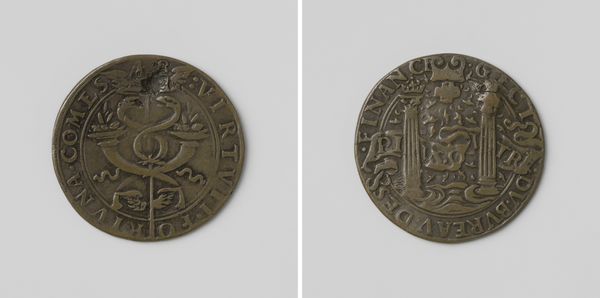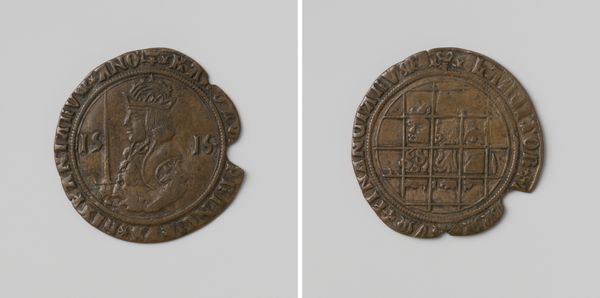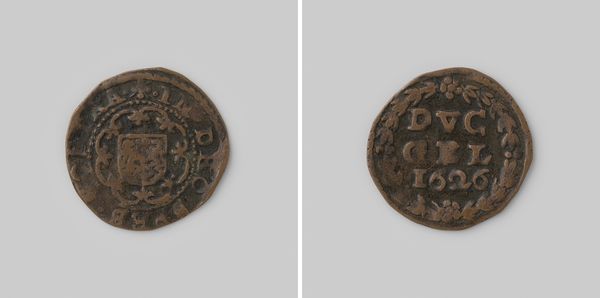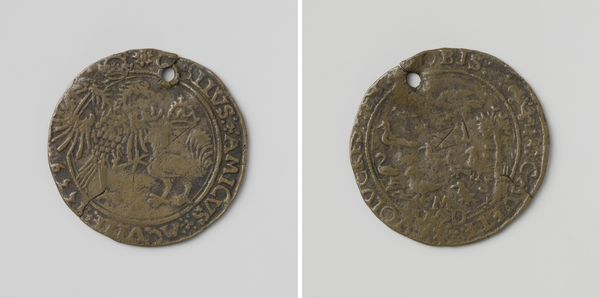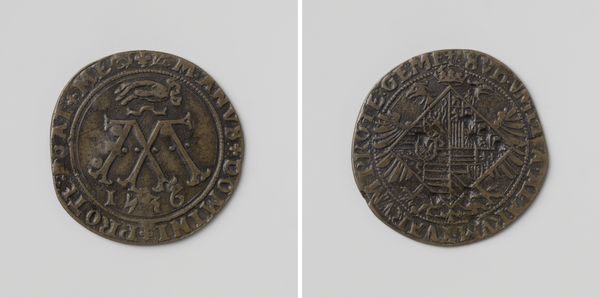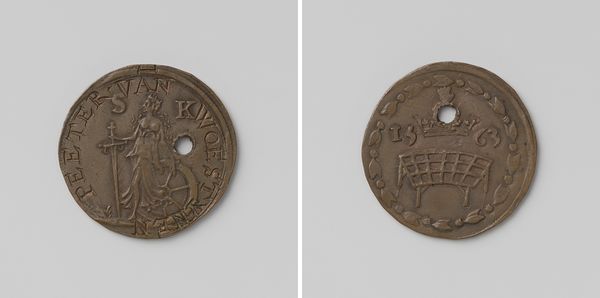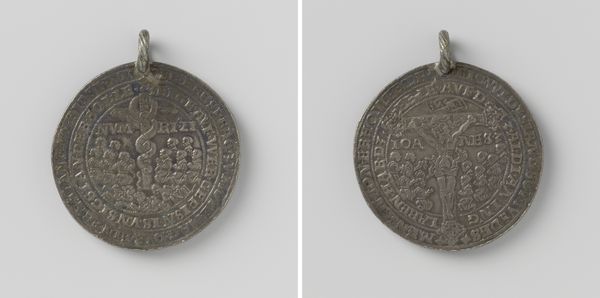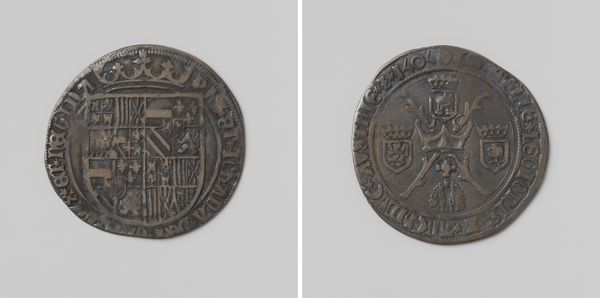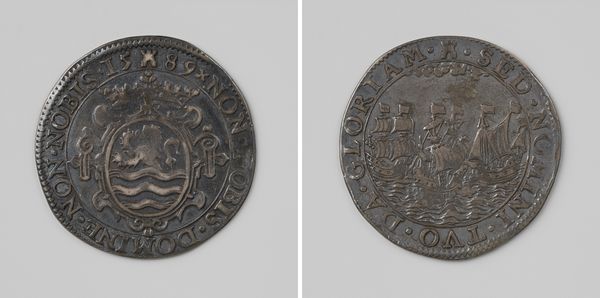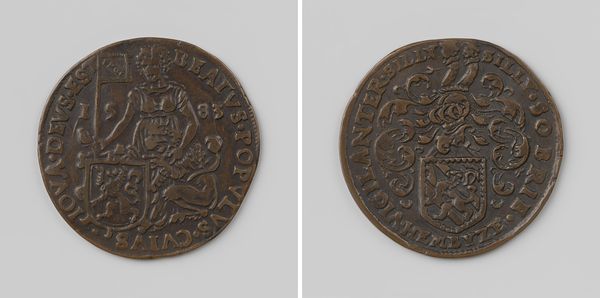
Maximiliaan, aartshertog van Oostenrijk, en Maria, hertogin van Bourgondie, rekenpenning van het hertogdom Brabant 1478
0:00
0:00
metal, relief, sculpture
#
portrait
#
medieval
#
metal
#
sculpture
#
relief
#
sculpture
#
history-painting
#
northern-renaissance
Dimensions: diameter 2.7 cm, weight 3.64 gr
Copyright: Rijks Museum: Open Domain
Curator: Here we have a fascinating accounting token from 1478, crafted in the Duchy of Brabant. It commemorates the marriage of Maximiliaan, Archduke of Austria, and Maria, Duchess of Burgundy. Editor: Immediately, the patina of age strikes me—that deep bronze tone speaks volumes. You can almost feel the weight of history, both literal and symbolic. It also speaks of power, in some respects, since medallions such as these represented social capital. Curator: Precisely! Its function provides insight into late medieval administrative practices. On one side, you see the conjoined shields representing Austria and Burgundy beneath what appears to be a structure—perhaps a stylized representation of their union or even a city gate signifying access and alliance. Editor: And I'm intrigued by the Latin inscription circling each side. It seems more than mere identification—more a claim, a justification of their combined rule, or perhaps, a hope for continuity. What were some of the gender dynamics at play at that time? Maria’s power was inherited. Was this an assertion of female leadership in a world shaped by men? Curator: The inscription underscores legitimacy, especially critical for Maria, who inherited Burgundy at a young age. You know, coins and medallions such as these became visual anchors, ensuring not just financial exchange, but reinforcing societal order, transmitting specific values and norms, and perpetuating narratives regarding succession and power. Editor: So it acted as a propaganda piece. But these were volatile times in terms of societal structure and dynastic changes. How did the use of these types of artworks inform political perception and stability in Brabant during their reign? What effect did it have on their social and political interactions with the regions, kingdoms, and cultures around them? Curator: By visually and symbolically representing their united front through recognizable visual cues, their power could have been better understood by people throughout both Duchies. Editor: Looking at it again, it truly underscores how power and marriage are intertwined. Something to reflect upon in our current day, really, especially concerning marginalized communities. Curator: A visual metaphor, still speaking to us after all these centuries! Editor: Absolutely, it helps me remember that our actions create a record for people to study about our values and how power dynamics continue to shift.
Comments
No comments
Be the first to comment and join the conversation on the ultimate creative platform.
